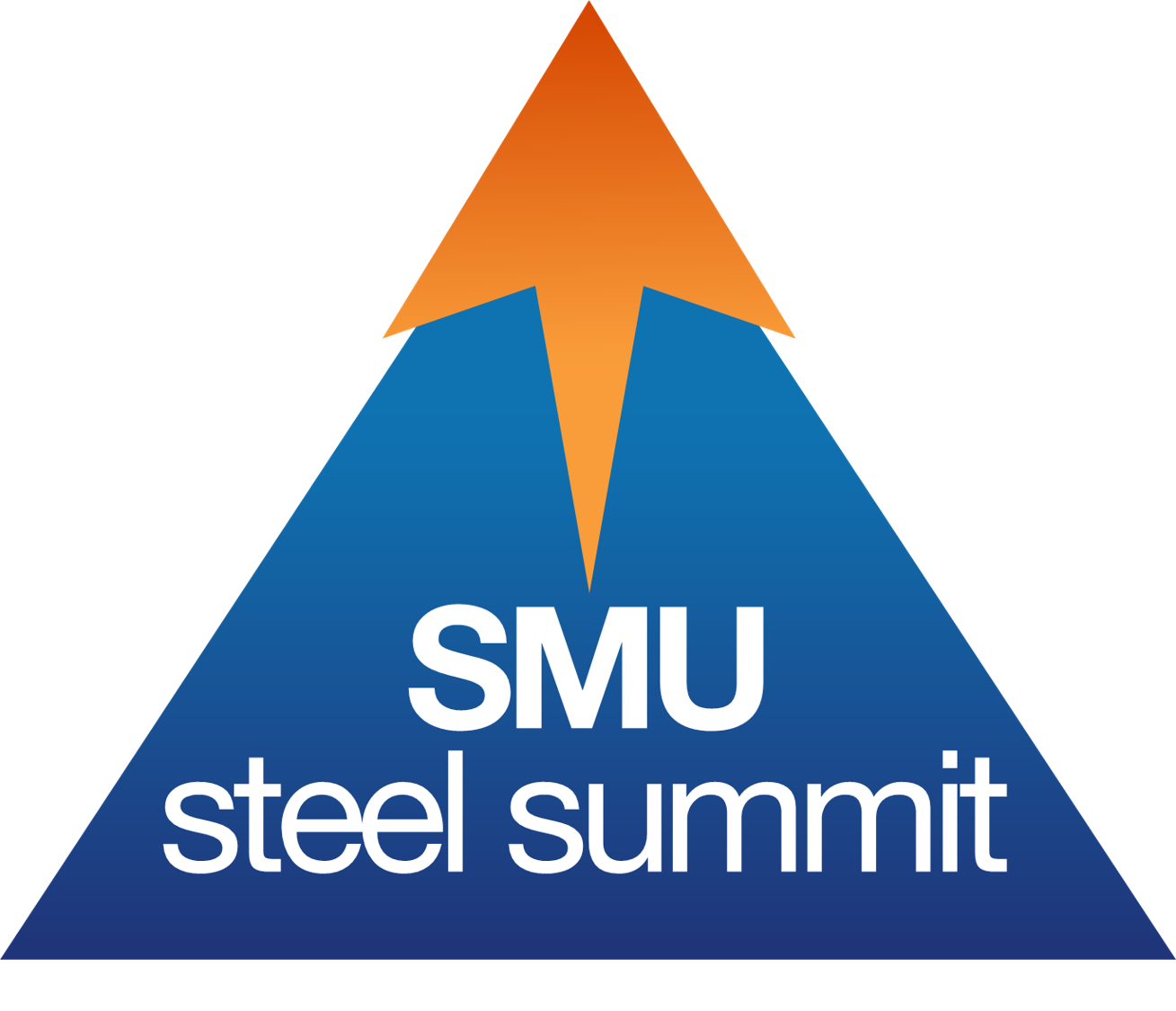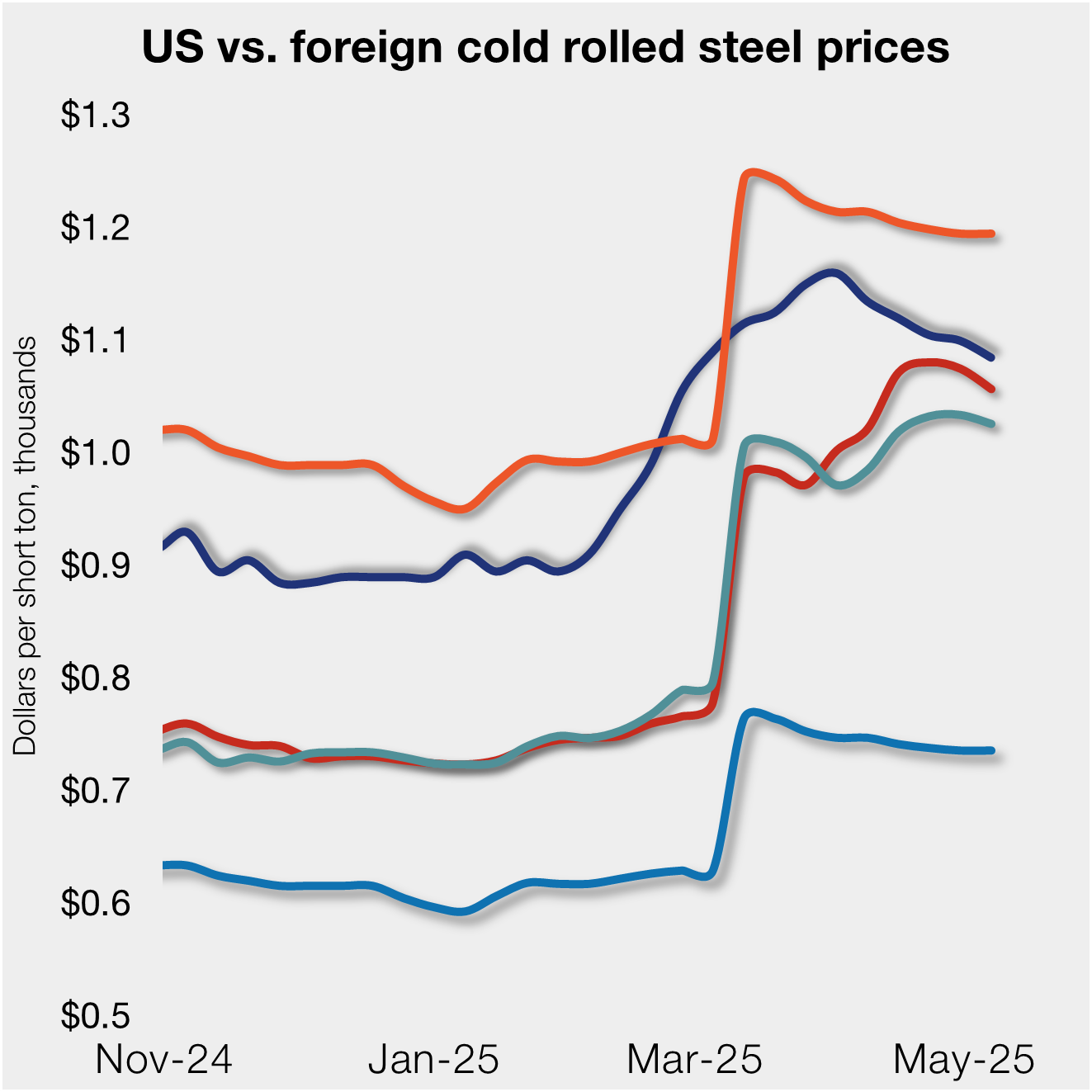Steel Products

SMU CEO John Packard Discusses Price Increases
Written by John Packard
November 22, 2019
The domestic steel mills were busy on Friday with SSAB USA announcing a $40 per ton price increase on steel plate, and then U.S. Steel coming out with a $30 per ton price increase on flat rolled. The SSAB increase was the second on plate this month. Flat rolled has seen three price increase announcements totaling $110 per ton since the first one in the cycle was announced in late October.
ArcelorMittal USA followed the U.S. Steel announcement by providing specific base price guidance on spot pricing out of their mill. They referenced hot rolled as being a minimum of $600 per ton ($30.00/cwt) with cold rolled and coated at $810 per ton ($40.50/cwt).
![]() As of this past Tuesday, Steel Market Update’s hot rolled average spot price was $535 per ton ($26.75/cwt). The $535 per ton represents an improving price environment as price averages on HRC are up $65 per ton ($3.25/cwt) since the cycle bottom on Oct. 22 when we posted a $470 per ton average.
As of this past Tuesday, Steel Market Update’s hot rolled average spot price was $535 per ton ($26.75/cwt). The $535 per ton represents an improving price environment as price averages on HRC are up $65 per ton ($3.25/cwt) since the cycle bottom on Oct. 22 when we posted a $470 per ton average.
I find it interesting ArcelorMittal is trying to increase the spread between hot rolled and cold rolled/coated base prices to $210 per ton. As of last week, SMU had the spread as being $185 per ton. For those of you who have not been steel buyers or are unaware of the historical spread between HR and CR/coated, it is usually $100-$140 per ton.
I also found it interesting that the two mills making the flat rolled price announcements this past week are the two mills that have recently taken out or announced taking out capacity in the form of shutting down or temporarily idling blast furnaces. There are rumors in the market that one or both of these mills may be considering taking more capacity off-line in the coming weeks.
Steel buyers are telling me that the current market is being driven by an overabundance of supply. U.S. Steel and AMUSA are attempting to reduce or justify capacity in accordance with order flows.
There has also been discussion about U.S. Steel in the marketplace as to whether the mill has decided to concentrate on auto, appliance, energy and electrical markets and perhaps move away from other market segments. This could explain their decision to move away from indexed-based contracts and the removal of some of their blast furnaces from the existing market. I don’t know if this is indeed the case, and I will attempt to speak about this to U.S. Steel to see if we can get a response.
The general manager of a service center discussed U.S. Steel and provided his opinion on the moves they have been making: “If USS is truly in the midst of redesigning themselves to become a smaller, more high-end niche producer (auto, appliance, energy, electrical) and embracing new technologies like BRS and their new Mon Valley project, then God bless them. We all know that shedding aged northern integrated capacity is going to happen whether by choice or not. It’s very possible that USS came to that conclusion and they are moving in this direction already and doing it with as much control as they can (not in the middle of a severe downturn, etc.).”
This same GM told me, “Changes are occurring there [USS], and many more to come, with the timing the only unknown.”
The market is aware of Bank of America Merrill Lynch analyst Timna Tanners and her trademark protected “Steelmageddon” forecast for the steel industry. Her forecast essentially calls for a massive drop in spot steel prices due to the construction of so much new capacity during 2020-2022. We will have new capacity as Big River Steel doubles their Arkansas mill (late 2020), Steel Dynamics adds a new 3.0+ million ton flat rolled mill in Texas (2022), Ternium Mexico adds 4.5 million tons of new HRC and upstream capacity (2020), Nucor adds a new plate mill… Well, you get the picture.
I do believe there will be major moves by the integrated steel producers (and maybe even some older EAF capacity may be affected) to remove and justify existing capacity to see if it will make sense in the new steel world come 2022. Stelco is one of the mills making a move to protect itself as an integrated steel proder by working to be a provider of pig iron, which is used extensively by the electric arc furnace or mini mills. Their ability to “flex” between their own production and producing merchant pig iron provides them options in bad markets. A smart move, in my opinion.
![]() I can’t talk about the new steel industry without putting in a plug for our next Steel 101: Introduction to Steel Making & Market Fundamentals Workshop which will be held in Ontario, Calif., on Jan. 7-8, 2020. We will be touring the California Steel Industries steel mill as part of our workshop. The workshop is about two-thirds sold out, which means there are still plenty of good seats available. I will tell anyone who is thinking of attending that I have viewed those registered and this will be a very interesting networking workshop. Go to www.SteelMarketUpdate.com/Events/Steel101 for more information or contact Events@SteelMarketUpdate.com or you are welcome to give me a call – 770-596-6268.
I can’t talk about the new steel industry without putting in a plug for our next Steel 101: Introduction to Steel Making & Market Fundamentals Workshop which will be held in Ontario, Calif., on Jan. 7-8, 2020. We will be touring the California Steel Industries steel mill as part of our workshop. The workshop is about two-thirds sold out, which means there are still plenty of good seats available. I will tell anyone who is thinking of attending that I have viewed those registered and this will be a very interesting networking workshop. Go to www.SteelMarketUpdate.com/Events/Steel101 for more information or contact Events@SteelMarketUpdate.com or you are welcome to give me a call – 770-596-6268.
If you would like to become a subscriber to Steel Market Update newsletters and our website please contact Paige@SteelMarketUpdate.com and she can outline what we offer, pricing, free trials, etc.
As always, your business is truly appreciated by all of us here at Steel Market Update.
John Packard, President & CEO

John Packard
Read more from John PackardLatest in Steel Products

Final Thoughts
For those who don’t know, we have a monthly scrap survey. It’s very similar to our industry-leading flat-rolled steel survey. We cover market trends, pricing, and sentiment – which helps us keep our finger on the pulse of the scrap market. One thing we’ve learned lately from our surveys here at SMU: The lack of […]

SMU Steel Summit 2025: Reaching new heights!
The 2025 SMU Steel Summit is shaping up to be another record-smashing event, and the buzz around the gathering is growing. It runs Monday, Aug. 25 – Wednesday, Aug. 27, at the Georgia International Convention Center (GICC) in Atlanta.

Steel exports rose in March, but remain weak vs past years
The volume of steel exported from the US marginally increased from February to March, according to the latest US Department of Commerce figures. Although up month over month (m/m), export levels have generally trended downward over the past year.

US, offshore CRC prices continue to fall
US cold-rolled (CR) coil prices moved lower again this week, slipping five weeks in a row now. Most offshore markets mirrored the move, ticking down as well.

SMU scrap market survey results now available
SMU’s ferrous scrap market survey results are now available on our website to all premium members. After logging in at steelmarketupdate.com, visit the pricing and analysis tab and look under the “survey results” section for “ferrous scrap survey” results. Past flat-rolled survey results are also available under that selection. If you need help accessing the survey results, […]
